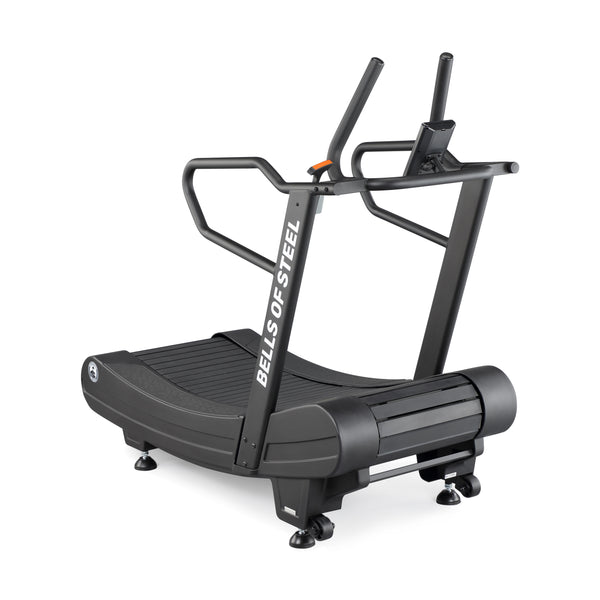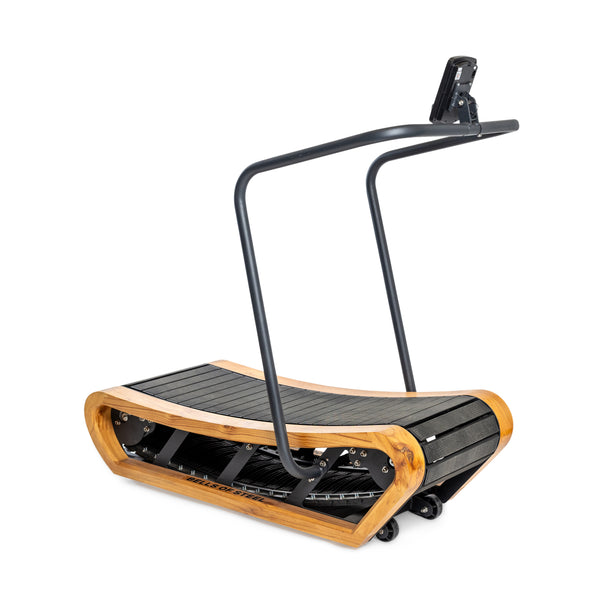So, you've decided to turn your garage into a home gym. Kudos! But now, the million-dollar question: should you go old-school with a manual treadmill or embrace the electric buzz?
Fear not, fellow iron enthusiasts! In this article, we'll break down the pros and cons of both, helping you make an informed decision worthy of your gainz.

Manual Treadmills: The Unplugged Cardio Symphony
Pros
Affordability
Let's be real, buying weights for your home gym can sometimes feel like you're financing a small country. Manual treadmills are the frugal fitness enthusiast's dream – cost-effective without compromising functionality.
Eco-Friendly Sweat Sessions
Going green, one sprint at a time! Manual treadmills don't rely on electricity, making them an environmentally conscious choice. Your gains are not at the expense of Mother Earth!
Control Freaks Rejoice
With manual treadmills, you dictate the pace. No buttons to press, no pre-set programs; it's just you and the treadmill. Perfect for those who want to tailor every step to their liking.
Cons
No Motor, No Speed Rush
The absence of an electric motor means manual treadmills generally have a fixed incline. If you're dreaming of a hill sprint, you might need to invest in some creativity – or head outdoors.
DIY Entertainment Required
Forget Netflix and chill – it's more like "Netflix and pump those legs." Manual treadmills lack built-in entertainment features, so prepare to DIY your distraction. Bright side, the quiet design makes it easier to watch that episode of The Office you’ve seen 30 times.
Not for Sprint Aficionados
Speed demons, beware! Manual treadmills may not keep up with your Usain Bolt aspirations. You have to push yourself rather than relying on the motor. Do you have what it takes?
Pros
Endless Speed Possibilities
Need for speed? Electric treadmills have got your back. With various speed settings, you can go from a casual stroll to a full-on sprint without breaking a sweat on the speed transition.
Incline Wonderland
Fancy conquering Everest during your morning jog? Electric treadmills usually come with adjustable incline settings, simulating various terrains. Say goodbye to flatland boredom!
Tech Versatility
Treadmill time becomes Netflix binge time. Electric treadmills often feature integrated screens, speakers, and even app connectivity, turning your cardio into an entertainment extravaganza.
Cons
Cha-Ching! The Cost Factor
Quality comes at a price, and electric treadmills are no exception. They tend to be pricier than their manual counterparts, potentially denting your budget for those shiny new dumbbells.
Carbon Footprint Blues
Powered by electricity, these treadmills contribute to your energy bill and carbon footprint. Not ideal for those aiming to balance gains with environmental friendliness. Also you have to place it near an outlet, which can be a nightmare. These bad boys are heavy.
Space Invaders
Electric treadmills often come with more bells and whistles, but they can also hog more space. If your home gym resembles a closet rather than a stadium, this might pose a problem.
Choosing Your Treadmill: A Few Words of Wisdom
Now that we've laid out the battlefield, how do you decide which treadmill is your fitness soulmate? Here are a few considerations:
1. Budget Battle
If you're watching those pennies, a manual treadmill might be your financial savior. Electric treadmills offer more features but can be a financial workout of their own.
2. Space Odyssey
Measure twice, buy once. Assess your available space and choose a treadmill that fits your gym without turning it into a maze. Also, make sure the treadmill you choose fits your goals. Compact versions aren’t always ideal for sprinting.
3. Speed Limits
If you're a sprint lover, an electric treadmill might be your match made in cardio heaven. Manual treadmills have speed limits that could curb your need for speed.
FAQs: Solving the Treadmill Mysteries
Q: Can I use a manual treadmill for running?
Absolutely! While they might not hit the high speeds of electric treadmills, manual treadmills can still accommodate a solid running session. Size matters too—compact versions like the Residential Manual Treadmill are better for walking and jogging.
Q: Do manual treadmills require maintenance?
Minimal maintenance is the name of the game. Keep them clean and you're good to go.
Q: Are electric treadmills noisy?
The hum of an electric treadmill motor can be pretty noisy, especially when the belt has insufficient cushioning for your footfalls. If it's too noisy, crank up the music or switch to a quieter Manual Treadmill.
Conclusion
Choosing between a manual and an electric treadmill is like choosing between free weights and machines – it all boils down to personal preference and fitness goals.
So, are manual treadmills better than electric? It depends on you, your budget, and how much you love controlling every aspect of your workout.
Now go, dear gym warrior, and may your treadmill be as swift as your gains!



